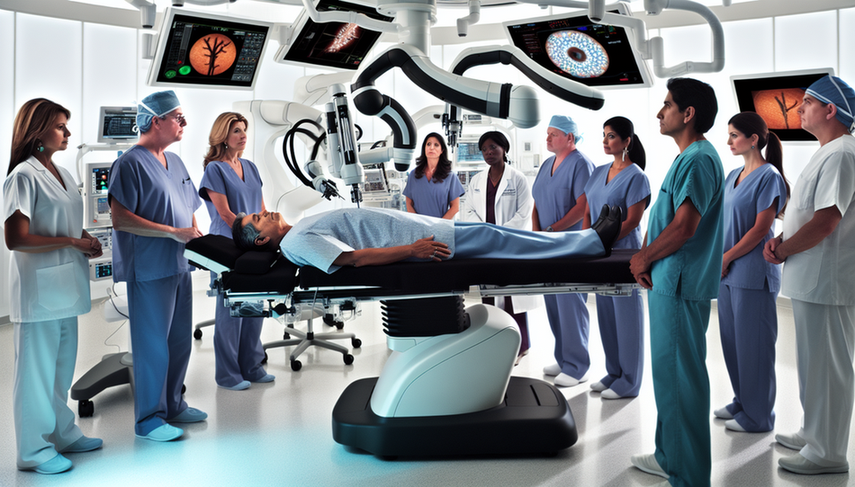Robotization in Medicine: How Robotic Surgery Enhances Time Optimization and Improves Quality of Care

The robotization in medicine has significantly transformed the surgical landscape in recent decades. Robotic surgery not only optimizes surgical times but also enhances the quality of care, providing benefits for both patients and healthcare professionals. This technological advancement has enabled the performance of complex procedures with greater precision and fewer complications, resulting in faster and less painful recoveries for patients.
Time Optimization and Improvement of Quality of Care
Assistive technology in robotics has proven to be a valuable tool across various surgical specialties. For instance, in robot-assisted myomectomy, it has been observed that although the costs are higher, the robotic technique allows for the management of more complex cases that previously required laparotomy, thus optimizing surgical times and improving outcomes for patients [1]. Similarly, in the treatment of ovarian cancer, robotic surgery has shown a reduction in postoperative complications and a more efficient patient flow, leading to lower hospital costs [2].
Moreover, robotic surgery has been fundamental in enhancing safety and quality in complex procedures such as spine surgery, where precision and time efficiency are crucial [3]. The implementation of innovative technologies in surgery has not only improved clinical outcomes but also optimized resource utilization and reduced hospital stay durations [4].
Conclusions
The robotization in medicine has proven to be a crucial advancement in time optimization and quality of care improvement. Robotic surgery offers unprecedented precision, reducing complications and enhancing the patient experience. As technology continues to advance, it is essential for healthcare professionals to stay updated and trained to maximize the benefits of these innovations. The adoption of these technologies not only improves clinical outcomes but also optimizes resource use, which is fundamental in an increasingly demanding healthcare environment.
Referencias
- [1] Robot-assisted myomectomy
- [2] Impact of robotic surgery on patient flow and resource use intensity in ovarian cancer
- [3] Image-guidance, Robotics, and the Future of Spine Surgery
- [4] Impact of innovative technologies on quality and safety in surgery
Created 23/1/2025
